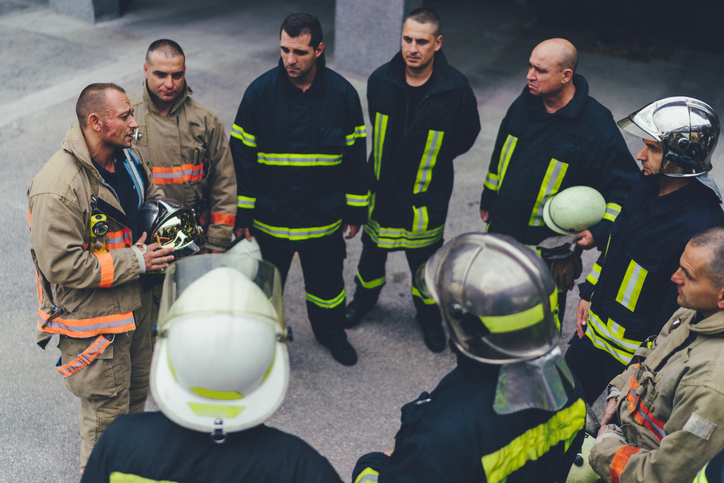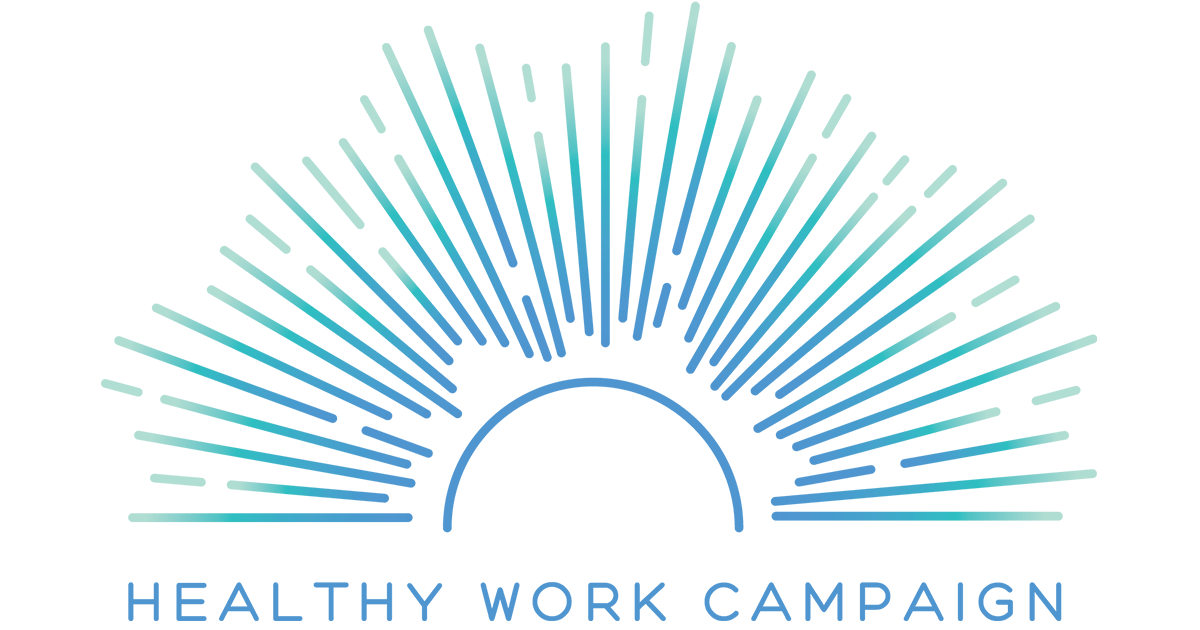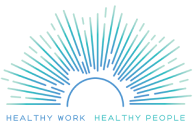What is the Healthy Work Survey (HWS)?
- A free, online tool developed by the Healthy Work Campaign – identifies work- related causes of common mental and physical health problems.
- Measures work stressors (sources of stress at work, also called psychosocial hazards) for individuals, organizations, groups of workers in specific workplaces, union members and others.
- A Google Form, which takes about 20 minutes to complete, and is anonymous, secure and confidential.
- Scientifically accurate and developed in collaboration with a team of university researchers and occupational health and safety experts.
- The majority of questions come from the NIOSH Quality of Worklife questionnaire, used every 4 years as part of a nationally representative survey of US working people.
- After completion of the survey by participants, a free, confidential report of personal results can be emailed directly to each participant (if they choose) and an aggregate/group-level report can be generated for the organization.
How can organizations use the HWS?
If you are a representative of a labor organization or a worker health and safety group, or other worker advocacy organization and you are interested in using the survey with a group of workers/members, please complete this short form.
We will then email you a unique and confidential link to the HWS with guidance about how to administer the online survey. After your group completes the survey, we will email you an anonymous, automatically generated, aggregate/group-level report. You can see how the results for your group or organization compare to scores on major work stressors from the NIOSH QWL national U.S. population survey.
Why use the HWS?

An essential step any union/worker advocate organization can take to protect the health & safety of members is to identify stressful and health-harming working conditions, based on the first-hand experiences of workers. This tool will allow you to start that process. The Healthy Work Campaign also provides additional tools and resources to guide you in working with workers/members to develop ideas for reducing work stressors and making workplace improvements.
What has stress got to do with health & safety?
Unions and other worker advocates have always organized to protect the health and lives of workers. While we need to continue to address the physical hazards in the work environment to prevent accidents, injuries, and exposures to toxins and infectious diseases, we now also know how important it is that we address work-related psychosocial stressors (sources of stress at work or “psychosocial hazards”), such as high job demands/workload, long work hours, low job control, low supervisor support, work-family conflict, bullying, harassment, discrimination and low rewards.
Research studies document that when we experience stressors like these at work, over a long period of time, the chronic stress that results takes a toll on our bodies and minds. The stress we experience is not just in our heads but in our bodies as well and it is caused by the policies, practices and demands in the workplace. Eventually, chronic exposure to work stressors can lead to burnout and depression, as well as high blood pressure and heart disease.
What can you do with this survey data?
The HWS is just one tool in a toolbox for learning about work, communicating with workers/members and creating conditions for changes in the workplace. Membership meetings, workshops, interviews or focus groups can also be used to collect important information about issues at the workplace. The HWS can be used along with all these other tools.
After a group completes the HWS, an automated report of the results is generated and sent to a designated representative. This report identifies harmful working conditions (psychosocial hazards) and can serve as a basis for discussion with workers/members about problems in the workplace. It can be presented during a membership meeting or a workshop, in an Executive Board meeting, or as part of a health and safety or labor-management committee meeting.
The Healthy Work Campaign (HWC) provides tools and various strategies and resources showing examples of organizations (including labor unions and worker centers) that have successfully organized to change and reduce work stressors. These interventions aim to improve workload/staffing and reduce bullying, work-family conflict, poor job security, and low supervisor support.
The HWC has also identified existing evidence-based guidelines (e.g., see the Healthy Workplace Participatory Program) for how to establish work groups/committees to address healthy work that include workers/members and other representatives. The intent of these work groups is to come up with ideas, or to design programs or policies that can address issues related to reducing work stressors. Workers have front-line knowledge of these issues and are often situated in the best location in an organization to problem solve. True worker participation in decision-making is also an important tool to enhance health and well-being.
What kinds of questions are in the HWS?
- Conflicting demands at work
- Workload
- Adequate resources (staffing, equipment)
Job control
- Given freedom to decide how to do my job
- Take part in making decisions
- Do a number of different things
- Use skills and abilities
Workplace social support
- Supervisor is concerned with the welfare of those under him or her
- The people I work with can be relied on when I need help
Work-family conflict
- Demands of job interfere with family life
- Demands of family interfere with job
Rewards
- At the place where I work, I am treated with respect
- The job security is good
- Promotions are handled fairly
Safety climate
- The safety of workers is a high priority with management where I work
Work Status/ Arrangements
- Full-time, Part-time, Self-Employed
- Type of Pay (Hourly, Salaried, Self-Employed
- Second job
- Supervise others?
- Type of shift (day, afternoon, evening, night, rotating etc.)
- Mandatory overtime
Emotional Labor
- Work that is emotionally demanding
- Work requires that you hide your feelings (surface acting)
Physical environment
- Physical effort
- Dangerous machinery/equipment
- Exposures to vapors/gas/dust, extreme temps, excessive noise, heavy lifting (>50lbs)
- Electronic monitoring
Precarious employment characteristics
- Employment arrangements (Ex. Regular/permanent employee, independent contractor/freelance, on-call, temp agency)
- Alternative forms of pay (Ex. tips, commissions, paid by the day/contract)
- Low wages (< $12.39/hour)
- Paid late or not paid at all; Did NOT receive extra pay for overtime; Receive less than minimum wage; Boss takes part of your tip money)
- Regular changes to work time?
- Advance notice of schedule changes
Bullying/Respect/Justice
- Organizational justice (fair policies and procedures)
- Workplace bullying (personally experienced/witnessed)
- Physical violence at work (personally experienced/witnessed)
- Sexual harassment on the job (in last 12 months)
- Discrimination (race/ethnicity, gender, sexual orientation etc.)
COVID-19 impact
- Changes in employment/hours/income?
- Work from home?
- Concern about bringing home the virus
- Does your employer have an infection control program?
- Is your employer/union doing best to protect you and others?
- Sufficient training to use PPE?
- Psychological health & safety climate
Self-reported health/Chronic health conditions
- Self-reported general health
- Days affected by poor physical/mental health
- Exhaustion – burnout
- Self-rated work/home stress
- Back pain (past 12 months)
- Work injuries (past 12 months)
- Sleep problems (past 12 months)
- Sickness absence
- Hypertension, diabetes, depression
- Body Mass Index/Obesity
Sociodemographics
(only reported if >50 participants)
- Gender
- Age
- Race/Ethnicity
- Education
- Marital Status
- Household Income (optional)
*These items do not represent all or the exact wording of HWS questions.






